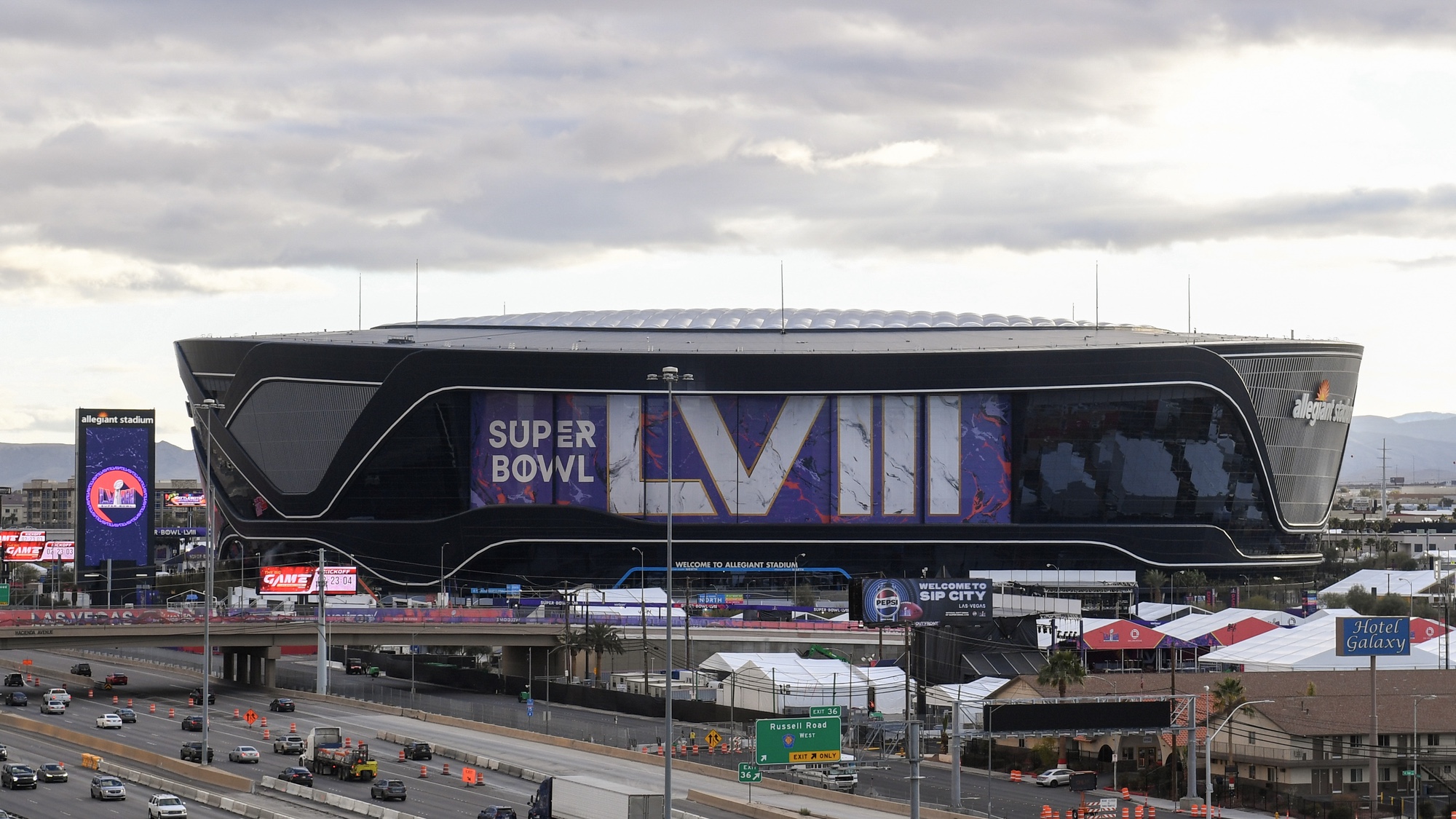
When Super Bowl LVIII kicks off Sunday (February 11), it will be the culmination of a season of hard work for the San Francisco 49ers and Kansas City Chiefs. For Verizon, it will mark the moment the wireless carrier has been working toward for the past three years when it's been upgrading its network to handle the crush of fans and media descending upon Las Vegas.
Some 72,000 people will pack themselves into Allegiant Stadium at game time. And when they get to their seats, Verizon says, they shouldn't have any trouble uploading videos, looking up stats and enjoying fast download speeds.
"Communications is everything," said Kyle Malady, vice president and CEO of Verizon business during a pre-Super Bowl event highlighting Verizon's network-boosting efforts in and around Las Vegas. "What we're really excited about is the investment we made with the NFL in the stadium. You won't get the spinning wheel where nothing's happening."
That's the result of work that began three years ago, Verizon says, as the carrier spent that time nearly tripling the capacity of its Las Vegas network. More than 547 miles of fiber have been installed around the city, while Verizon's C-Band spectrum covers 52 million square feet of casinos on the Vegas strip.
Inside Allegiant Stadium itself, Verizon says it's put in around 250 5G mmWave radios for coverage in seating areas, suites, the press box and concourses. The use of C-Band puts a full 160 MHz of spectrum at fans' disposal, tripling the amount of 5G bandwidth available at the game last year.
That Super Bowl was meaningful in its own right, noted Joe Russo, Verizon's president of global networks and technology. "The last Super Bowl was the first with Ultra Wideband technology where you could be in the parking lots, the stadium, and you could FaceTime or stream videos," Russo told me. "Those kinds of things would have never been possible [previously]."
That's good news for anyone out there who's scored a ticket to the Super Bowl. But why should those of us who haven't dropped several grand to attend the game care about improved connectivity at the big game?
Because, Verizon executives say, even once the Super Bowl packs up and leaves town, the network improvements stick around. All that fiber and that increased C-Band spectrum are now as much of the Vegas scene as casinos and showgirls.
"We've put up lots of assets that not only will serve this weekend, but will serve Las Vegas well into the future," Russo said.
The same should hold true for New Orleans, host of next year's Super Bowl. According to Russo, the Verizon team tasked with getting that city's network ready for Super Bowl LIX is in Las Vegas this week to observe the current team in action, just as the folks responsible for the 2023 game in Phoenix are on hand to share what they learned from their experience.
"[The Super Bowl] gives us the opportunity to show off our technology and what we do, not just for the NFL, but for first responders and public safety," Malady said.
This year's game is also noteworthy because it marks the Super Bowl debut of Coach-to-Coach Communication, a private network product developed by Verizon and used throughout the NFL season to keep coaches on the sideline in communication with other coaches up in the booth without dropped connections or network interference. Verizon plans to take the headset worn by the winning coach — whether it's Kyle Shanahan of San Francisco or Andy Reid of Kansas City — and auction it off for charity.







